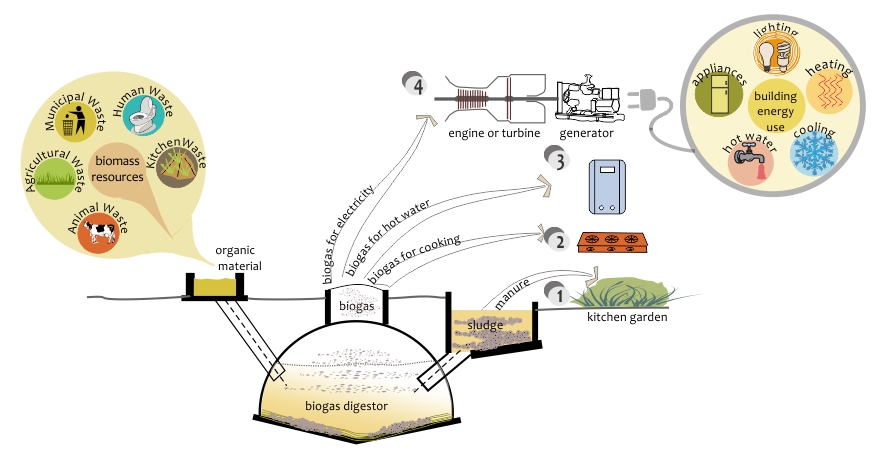Biomass energy is the energy obtained from plants or plant-derived materials. Wood is the most widely used source of biomass energy. Other sources of biomass include: terrestrial and aquatic plants, agricultural wastes, industrial residues, sewage sludge, animal and municipal wastes.
There are three major technologies used for conversion of biomass into useful energy:
- Biomass Gasification
In this, a thermo-chemical process is used to convert biomass to producer gas. Producer gas is a mixture of Carbon monoxide (CO), Hydrogen (H2), Methane (CH4), Carbon dioxide (CO2) and Nitrogen (N2). The sources of biomass in this include wood and its products as well as various agricultural residues. Upon gasification, this can lead to power generation in the range of 10 kW – 1000 kWe. The energy produced can also be used for thermal application in small industries up to 3 MW.
- Biogas
In this, Bio-methanation process is used to convert biomass to biogas. Animal dung is commonly used in production of biogas. The Biogas produced can be used for cooking in households as well as for electricity generation.
- Biofuels
The process of trans-esterification is used for production of bio-diesel. Bio-oil is also extracted from oil seeds. The source for biofuels is non edible vegetable oil seeds. Biofuels are used for electricity generation as well as motive power.
The use of biomass energy greatly reduces dependence on fossil fuels. The products used for conversion of biomass to energy are abundant in nature and the energy is renewable in nature. Biomass being a clean energy resource receives various tax benefits from the government.













